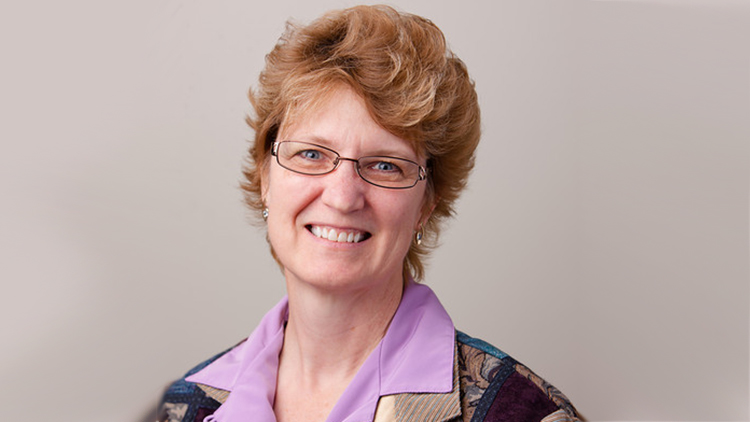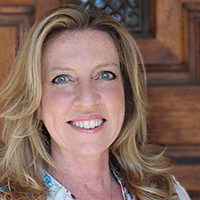Inspiring Futures: A Behind-the-Scenes Look at FLEXspace


The Flexible Learning Environments eXchange, FLEXspace, is an online open digital resource that is increasingly becoming a “one stop shop” for faculty, instructional technologists, AV/IT integrators, and facilities planners as they evaluate and design learning spaces for the 21st century. Designed by higher education professionals for higher education professionals, this integrated tool is sharing best practices to create and renovate technology integrated learning spaces. In 2011, SUNY and CSU along with other academic institutions, partnered with CCUMC, EDUCAUSE, and SCUP to create and stand up a beta version that featured high resolution images, detailed taxonomies and rich resource links on a robust web portal powered by Artstor. With help from Founding Sponsor Herman Miller, FLEXspace has evolved into a very valuable resource. Today there are more than 2,600 registered users from 1,200 campuses across 40 different countries.
Case Studies: The Value of FLEXspace

Dr. Lisa Stephens
As presented at EDUCAUSE in Anaheim, Iowa State University recently embarked on a major renovation project with the goal of identifying and prioritizing spaces that could emphasize specific elements in support of active learning. Their advisory committee of key campus stakeholders used FLEXspace to enable each group to identify and explore space details from their interests and perspective: facilities personnel focused on architectural elements, the AV and IT integrators focused on equipment that could be supported within current campus standards and investigate new tools to expand collaboration, while faculty advisors and academic technologists focused on peer benchmarking both by discipline and pedagogical elements.
The team also used the Learning Space Rating System (LSRS) to quantify the learning potential of each space to assist with aligning the desired active learning space elements with general renovation planning. Records containing desirable elements, primarily from aspirational peers was exported and compiled into PowerPoint (with space attributes and descriptive notes attached to each image) and discussed as a larger group with senior leadership to define investment priorities. This use of leveraging best practices through a “division of labor” enabled the school to start innovation from others in the community without recreating the wheel.

Dr. Rebecca Frazee
The Provost, Assistant Provost for Budget & Facilities, and Assistant Director of Education Technology at SUNY Geneseo shared a similar story at a SCUP conference. Although funding was not yet in place, the State was rumored at the time to be making capital funds available for “shovel ready” projects. The Provost wanted to be well-positioned for future opportunities, and their investigation began with use of the EDUCAUSE Learning Space Rating System to inform a new master learning space plan. The campus began aligning high needs by department, anticipated enrollment and long term plans. This team also included representation from each stakeholder group, with an emphasis on faculty involvement which ultimately created a strong sense of cohesion among the group and made it much easier for the faculty to serve as advocates to their peers, and to provide information based on a transparent process for how plans were being constructed.
A daily selection of features, industry news, and analysis for tech managers. Sign up below.
In both cases, substantial time, money and effort was saved because the “in house” team was aligned with shared values and the ability to better articulate the ideation results to outside architects and contractors who would ultimately be executing the projects. A case study that compared expenses for travelling to a peer institution against gathering the same information contained in FLEXspace calculated that for every dollar of time spent using these planning tools, $18 in site visit costs were saved! The process used at both schools also provided a foundation to help senior administrators engage in more productive conversations with potential donors.
This is the value that FLEXspace and LSRS offers to all planning groups who utilize its capabilities. As more campuses take advantage of free FLEXspace and LSRS resources, communities of practice (facilities, AV/IT integrators and faculty) are not just consuming records, but actively showcasing and contributing exemplars linked to case studies, research and resources that can be shared with academic institutions and partners around the world. Large groups are now joining FLEXspace from Japan, Europe, Africa, Australia, Canada and from across the United States.
FLEXspace is Attracting Major Sponsorship
FLEXspace is fueled by continued support from longtime Founding Sponsor, Herman Miller, as well as SUNY, the CSU system and the Foothill De Anza Community College District. Additionally, CCUMC, the EDUCAUSE Learning Initiative (ELI), InfoComm, and SCUP were early major supporters, and the growing list of corporate sponsors includes Crestron, FSR Inc., Sonic Foundry, Wolfvision, and Sony. Konrad+King is also providing substantial in-kind support in design and development of the highly anticipated 2017 mobile interface.
Herman Miller is expanding the FLEXspace collection by encouraging campuses to contribute exemplars. “At the UBTech Conference we enjoyed interacting with people interested in FLEXspace” said Derrell Jackson, Herman Miller Education’s Director overseeing the Learning Space Research Program. “We are proud to work with a dedicated academic community to help grow this amazing tool and service. It’s going to have a big impact on how instructors, facilities designers and academic technologists can collaborate both on-campus and across the globe in this new community of practice.”
Word of mouth seems to be the most effective marketing channel for FLEXspace, but the Core Team is actively hosting webinars with interested schools and potential sponsor partners, presentations and workshops at national and international conferences, and sponsor-supported contests to increase FLEXspace uploads. FLEXspace is also active on social media (Twitter @FLEXspaceorg) to encourage community involvement.
Version 2.0: Going Mobile
FLEXspace was honored to be a program sponsor at UBTech 2017 in Orlando where the FLEXspace mobile platform prototype was demonstrated with help from Sodexo conference sponsorship. A preconference workshop was very well received by a crowd of academics who clearly confirmed that FLEXspace will be instrumental in helping them connect with peers and find inspiration and guidance to improve campus learning space planning, design and development. One workshop participant said, “I wish we had this four years ago when I was documenting all of our campus learning spaces!” Another said, “This is fantastic! What can we do to help?”
Bennett King, principal at Konrad+King best describes new features of FLEXspace 2.0, “We interviewed a large number of heavy users and people far less familiar with the current tool as well as founders and sponsors. Two themes were immediately apparent—people need to use mobile devices to easily and quickly upload content, as well as easily search and find the type of spaces they’re looking for. We’re really proud to be helping to take FLEXspace to the next level—it’s obvious that there’s a lot of untapped potential that will benefit academic institutions, non-profits, museums and sponsors."
FLEXspace 2.0 will enable smart filtering, simplified search terms, links to toolkits, and space to create individual idea boards—similar to Pinterest. The community is also excited about the continued synergy between FLEXspace and the Learning Space Rating System. These tools are on a path to merge efforts in a more formal way as each team seeks to refine usability of the individual toolsets to provide additional simplicity and value moving forward.
Assuming that sponsorship and funding can be secured according to schedule, the timeline for testing and refining the prototype is currently underway, with the hope of content migration from the old system to the new system by Q1 2018. As content is migrated to the new interface, account creation and uploading of records will be frozen in early November. However, the FLEXspace.org website and community will remain active for collaboration and resource sharing.
In addition to being a Founding Sponsor of FLEXspace, Herman Miller is providing additional funds for development of the FLEXspace 2.0 tool. The Core Team is seeking additional funds and creative funding strategies such as grants and partnerships with institutions in addition to corporate sponsorship.
The FLEXspace team remains committed to offer FLEXspace as a free tool for the academic community, but are exploring a more advanced planning toolkit that may become available on a fee-based structure to support the necessary backend and user support as the community and collection grows. One UBTech conference goer said, “With the archiving tools, and all the communication and collaboration capabilities, we’d pay for this.”
Join the FLEXspace Community
The FLEXspace team’s collective efforts, the tool’s evident value, and growing partner support have paid off! Since summer 2016, the number of registered users has jumped by 40 percent, with a 50 percent increase in record contributions. To join the FLEXspace community, visit flexspace.org and sign up with your .edu (or official campus equivalent) email address. You’ll have access to imagery, planning resources, best practices, and get connected with like-minded colleagues from around the world.
Go Figure: FLEXSpace Stats (2017)
Users: 2,600
Institutions: 1,100
Records: 940
Spaces: 400
Countries: 40
Dr. Lisa Stephens serves as Senior Strategist for SUNY Academic Innovation in the Office of the SUNY Provost and holds an adjunct teaching position at the University at Buffalo Department of Communication. She is the Program Director of the SUNY Innovative Instruction Technology Grant (IITG) program, Manager of the SUNY-Coursera partnership, and Interim Director of FLEXspace, the Flexible Learning Environments eXchange – a global repository and community of practice of campus learning environments. Dr. Rebecca Frazee is a lecturer in the Learning Design and Technology program at San Diego State University, and the FLEXspace manager overseeing user support and outreach, sponsor and partner alliances, and the FLEXspace 2.0 project. Rebecca also works as an instructional designer, consultant and coach in the areas of training and development and organizational learning and performance systems.
